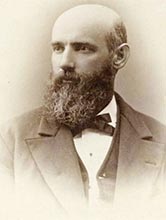2020
columns:
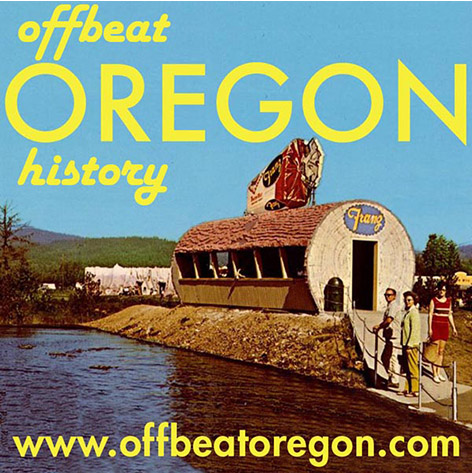
Welcome! This is the browsing page for articles published in 2020. You can read the first few paragraphs of each and decide if you want to continue ...
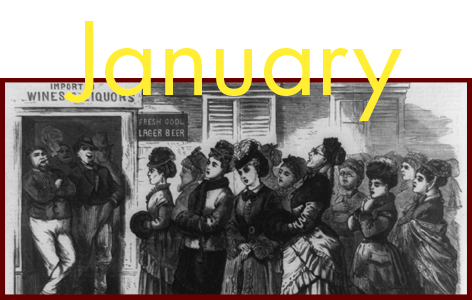
— JANUARY 2020 — LANE & MULTNOMAH COUNTIES, 1860s & 1870s —With a friend like A.C. Edmunds, early suffragists needed no enemies!Abraham Coryell Edmunds, throughout his several careers in Oregon and California, was almost like a cartoon — a larger-than-life loser in the vein of Wile E. Coyote, with a little Carrie Nation mixed in along with a whole lot of Don Quixote. Nor were his “own-goals” minor affairs. A.C. Edmunds was almost singlehandedly responsible for the demise of the early Universalist Church in California, the temporary collapse of the Universalist congregation in Portland, and for the sudden death of the temperance and women’s suffrage movements in Oregon in 1874. Before he got involved, Oregon was on track to become the first state in which women could vote. His efforts to help make that happen set the process back almost 40 years. ...
Audio (podcast version) of this article:
|

— FEBRUARY 2020 — CLATSOP COUNTY, 1930s & 1940s —The Great Sea Serpent of the Columbia River Bar lamely named “Colossal Claude”On or just after the Ides of March, 1934, the skipper of the lightship tender Rose returned from dropping off a relief crew on the Columbia River Lightship with a remarkable story. It seems the entire crew of the lightship, plus the crew of the Rose, saw a huge, snaky thing swimming around the ship – a genuine, bona-fide, honest-to-Godfrey sea serpent. “It was about 40 feet long,” recounted L.A. Larson, first mate aboard the Rose. “It had a neck some eight feet long, a big round body, a mean-looking tail, and an evil, snaky look to its head.” ...
|

— MARCH 2020 — DOUGLAS & JACKSON COUNTIES, 1870s to 1890s —Legendary Oregon prospector's death sparked two “Lost Gold Mine” legendsThey found the grizzled prospector’s body slumped over a sample of ore on the floor of the rude log cabin he’d been staying in, deep in the wilderness of southern Oregon, late in the spring of 1897. He’d apparently dropped dead one evening while assaying out the samples he’d gathered that day – probably poisoned by some of the chemicals he was using. But this wasn’t just any random gold prospector. This badly decomposed body was all that was mortal of the most famous prospector of the American West ‑ and certainly one of the richest and most successful: Ed Schieffelin, the man who discovered and named the Tombstone mine in Arizona. And by the time Ed’s body was securely buried under a tall miner’s cairn near Tombstone, the hills near that cabin were already alive with eager prospectors following up on the “lost gold mine” legends that sprang up following his death. At least one of those legends is still bringing hopeful prospectors out into the hills of Southern Oregon today. ...
Audio (podcast) version of this article:
|
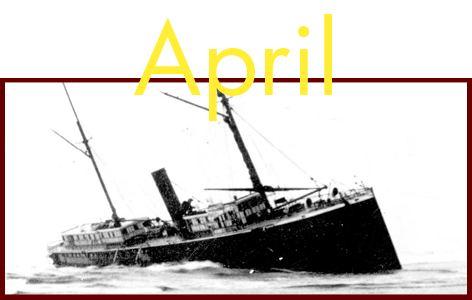
— APRIL 2020 —Corvallis/Toledo railroad tycoon's war record: Highway robbery on the high seasCorvallis/Toledo railroad tycoon T. Edgenton Hogg (pronounced “Hoag”) was always a little reticent about his past. Especially the Civil War part. To some extent, that was understandable. “Colonel” Hogg had fought with the Confederacy in the Civil War. His side had lost, so, sure — better not to talk about it, right? The rumor mill wasn’t nearly as reticent as Hogg was, of course. Hogg’s status as an ex-Rebel, and the fact that his railroad enterprise put him at odds with some of the powerful Portland businessmen who were writing Oregon’s official history, resulted in some very sketchy rumors finding their way into the historical record — such as the one that claimed he and his crew had been captured while trying to raid opium ships. Had his plans been successful, he certainly would have had a go at any ship, whether it carried opium or not; but as it happened, he never had the chance. Nevertheless, the real story is so much more bonkers than that, that one wonders why the rumor-passers even bothered with making things up.
Audio (podcast) version of this article:
|
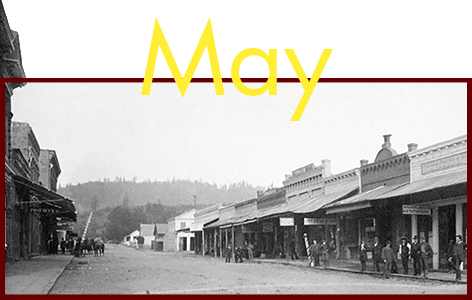
— MAY 2020 —Oregon’s wildest lost-cabin gold mine story may be true … but probably not.The “lost cabin gold mine” is a certifiable Western trope. If every ounce of legendary gold buried in an old log cabin became real and hit the banks at the same time, it would probably crash the international markets. They make for fantastic stories, though. And often the gold isn’t the only thing being hidden. Plus, of course, the fact that they might – just might – be real adds a distinctive spice to them. One of the most interesting and colorful Lost Cabin Gold Mine stories is the one that supposedly took place in the hills south of Jacksonville in 1853. In this case, it’s not a mine that’s been lost – it’s a vault: a small stone-lined crypt stuffed with millions of dollars’ worth of freshly dug gold, and guarded by whatever remains of the skeletons of two long-dead men. We have this story courtesy of poet-journalist-raconteur Sam Simpson, who was basically the Stewart Holbrook of the 1800s. As would be expected from Sam (or Stewart, for that matter!) it’s hardly factually reliable … but it is a humdinger of a tale.
|
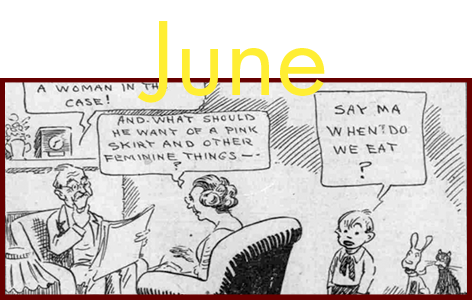
— JUNE 2020 —Roseburg dynamite murderer got busted by mailing a box of silk lingerie to Canada.On a warm summer’s evening in 1921, Dr. Richard Brumfield loaded about a dozen sticks of dynamite into his snazzy red convertible and left Roseburg, headed for handyman Dennis Russell’s tiny shack in the hills near Dillard. Dr. Brumfield had hired Russell to blast out some stumps from around a rural farm property he owned. At least, that’s what he’d told Russell when he hired him. But, as it turned out, he was lying about that. What Brumfield really wanted to hire Russell for was to impersonate a corpse. His corpse....
|

— JULY 2020 —Newcomer's stinginess with beach access led to massive drug bust.On December 6, 1977, a car pulled past the conspicuous “No Trespassing” and “Beware of Dog” signs at the perimeter of Arthur Allen’s oceanside ranch, about ten miles south of Bandon. Three men got out and approached the house. Allen, who had obviously been watching them approach, promptly emerged from the house and ordered them off the property. “We’re from the Bureau of Land Management,” one of them said. “We wanted to talk to you about negotiating to buy an easement across your land so visitors can access BLM property on the New River.” Allen relented and let the men approach the house, where he demanded to see their identification. Two of them promptly whipped out their wallets and showed their badges; the third, whose name was Larry Gano, said he’d left his wallet at home. It was a lucky break for Gano that Allen didn’t push it. Because he wasn’t with the BLM. He was with the United States Customs Service. And he was there because he was pretty sure Allen was running a smuggling operation. Spoiler alert ... oh yes, he was.
Audio (podcast) version of this article:
|
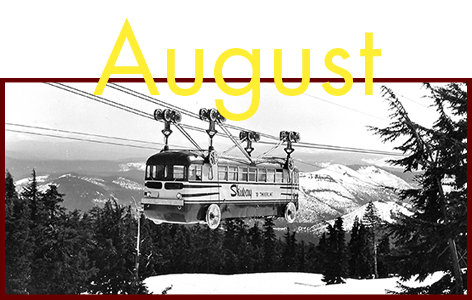
— AUGUST 2020 —“Cable-car” service to Timberline Lodge: A city bus dangling from a logging cableThe Skiway (originally “Skyway,” but that name turned out to already be trademarked) was the brainchild of Dr. J. Otto George, who came up with the idea just after the Second World War, as the popularity of skiing started to explode nationwide. With a group of other investors, he formed the Mount Hood Aerial Transportation Co. to implement his plan. The idea would be, rather than properly engineering a six- or eight-passenger gondola in the usual way, to incorporate the latest skyline-logging technology to hoist an entire city bus into the air and haul it up the side of the mountain. Each bus — there were two of them — was modified somewhat crudely to transfer the power from the drive wheels up to a 1.5-inch overhead traction cable, which it would claw its way along up and down the mountain. The whole project would use off-the-shelf parts and equipment modified to work in this new context, so it would be relatively cheap from a research-and-development standpoint. Most truly bad ideas are good ideas gone awry through some key detail being overlooked or superadded. Not this one. The Skiway was a bad idea through and through, from the very start. ... “I’ve ridden the tramway,” board member George Rauch said, at one of the later company meetings, as the failure of the venture was becoming obvious. “I’ve listened to the shrieks and I’ve taken the jolts over those, what you call them — the saddles, and I’ve heard what people say.”
Audio (podcast) version of this article:
|

— SEPTEMBER 2020 —How PDX boss shanghaier Larry Sullivan became a famous mining-stock swindlerBy the time legendary swindler George Graham Rice met Larry Sullivan at Sullivan’s gambling palace in Goldfield, he was doing a booming business in Nevada as the owner and copywriter for an advertising agency, working with the local mine owners. He provided a full-service kind of operation — not only placing ads for investors, but also sending out hundreds of fake “human interest” stories about life in the mining camps for East Coast and West Coast newspapers to run. These articles were basically dime-novel narratives of feuds and gunfights and gold strikes and virtuous-maiden-rescuings; and, of course, they prominently featured Rice’s clients in heroic roles. They were eagerly run by newspapers all over the country, and the people who read them came to feel like they knew the mines and the people who ran them. Naturally, they were much more comfortable investing their money in them. It was some of these stories, reprinted in the Portland newspapers, that initially attracted Larry Sullivan to Goldfield. Soon, Rice was happily gambling away large swaths of his “earnings.” After Sullivan arrived and built the Palace, he did a lot of his gambling there. By this time, of course, he was a pretty good gambler; Larry probably had his work cut out for him keeping him from winning too much. One day, Rice was cashing out $2,500 in winnings, and Larry came out to talk to him. “Say, young feller, why don’t you cut me in on some of your mining deals?” he said. “I’m game!” “Are you?” Rice shot back. “Well, stack up $2,500 against that money and I’ll see if you are.” Sullivan came across on the spot....
Audio (podcast) version of this article:
|
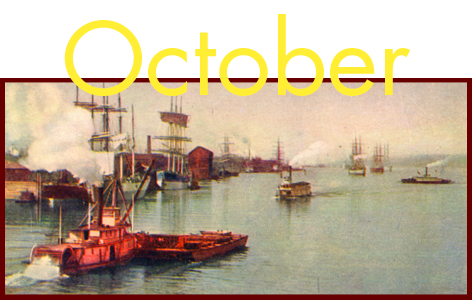
— OCTOBER 2020 —Ain't no party like a shanghaiing party: One sudden sailor's story of a visit to PortlandOne fine day in October of 1891, a teenage boy named Aquilla Ernest Clark left the farm in Scappoose where he’d been working, headed for Portland. He was going to see the sights and maybe show himself a good time for a few days. He wandered around the waterfront, taking drinks here and there and probably taking a hand in a card game or two; then, when it was getting close to evening, he met a pleasant fellow who happened to mention that he was staying at the sailors’ boardinghouse at Second and Glisan streets. “It’s the best place to stay in Portland,” he said. That sounded good; Aquilla needed a place to stay for the night. So he went with his new friend to the boardinghouse. “The place was rather dimly lighted,” Aquilla told author Stewart Holbrook, years later, in a 1933 interview for the Portland Sunday Oregonian. “A Scandinavian was playing an accordion in the big main room on the ground floor; several old-time seamen, or at least I took them to be such, were sitting in chairs around the room, smoking pipes that reeked to the skies and telling how these new-fangled steamboats would never amount to much.” It was good enough for Aquilla. He checked in....
Audio (podcast) version of this article:
|
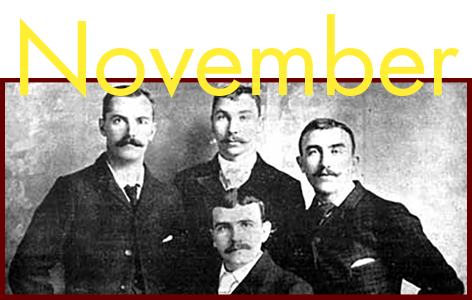
— NOVEMBER 2020 —When the Supreme Court decided slavery was OK in America, but only for sailors In May of 1895, on the old San Francisco waterfront, four sailors signed onto the four-masted barkentine Arago for a voyage to Valparaiso, Chile (“and thence to such other foreign ports as the master might direct, and thence to return to the United States”) via Astoria. By the time they got to Astoria, the four of them had had enough of conditions on the Arago. They stepped off the ship and essentially told the skipper, “We quit.” In doing so, they changed history — and the legal status of sailors would never be the same....
Audio (podcast) version of this article:
|

— DECEMBER 2020 —How Portland’s rabbi got in a gunfight at President Rutherford Hayes’ hotel room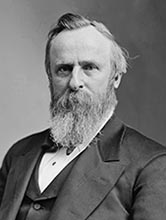 Oct. 1, 1880, was a very big day in Portland. For the first time in the history of the city or the state, a sitting President of the United States had come to visit. President Rutherford B. Hayes had arrived in Portland the night before and was staying in the Esmond Hotel, the nicest in Portland at the time, on the corner of Morrison and Front streets. Portland was, of course, very much a frontier town in 1880, still dotted with the stumps of the trees that had been cleared to make room for it. So it can’t have come as too much of a surprise to the president when, at 9:30 the next morning, a gunfight broke out directly beneath his hotel window. He was probably a little more surprised, though, when he found out who the gunfighters were: It was the president of the local synagogue — and the rabbi....
Audio (podcast) version of this article:
|
©2008-2020 by Finn J.D. John. Copyright assertion does not apply to assets that are in the public domain or are used by permission.


